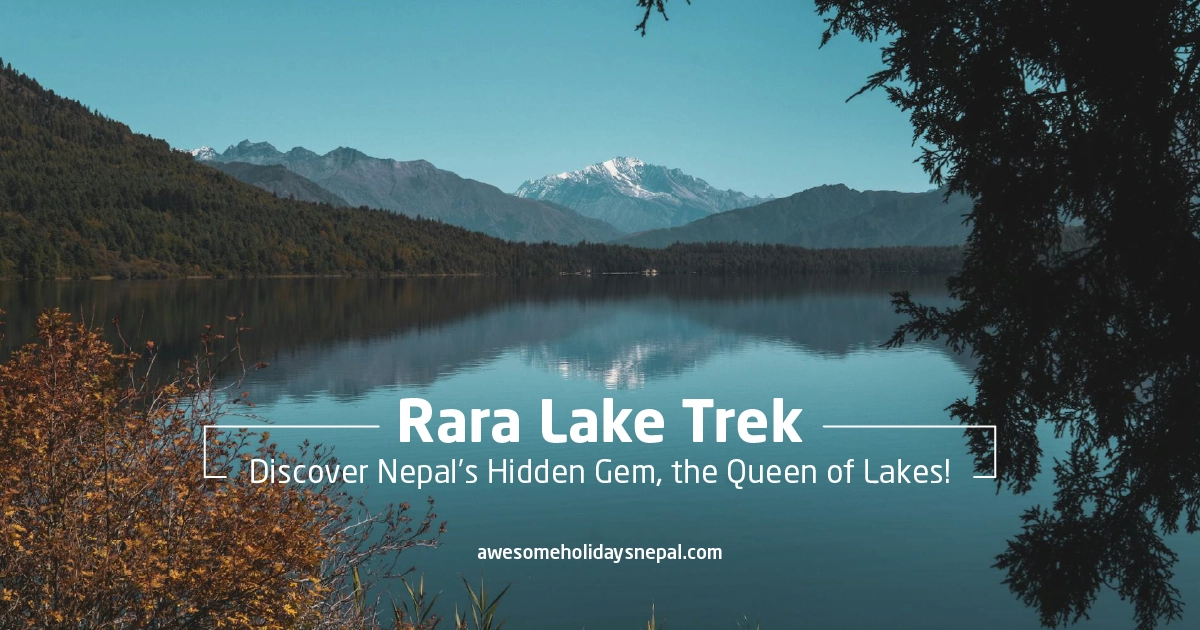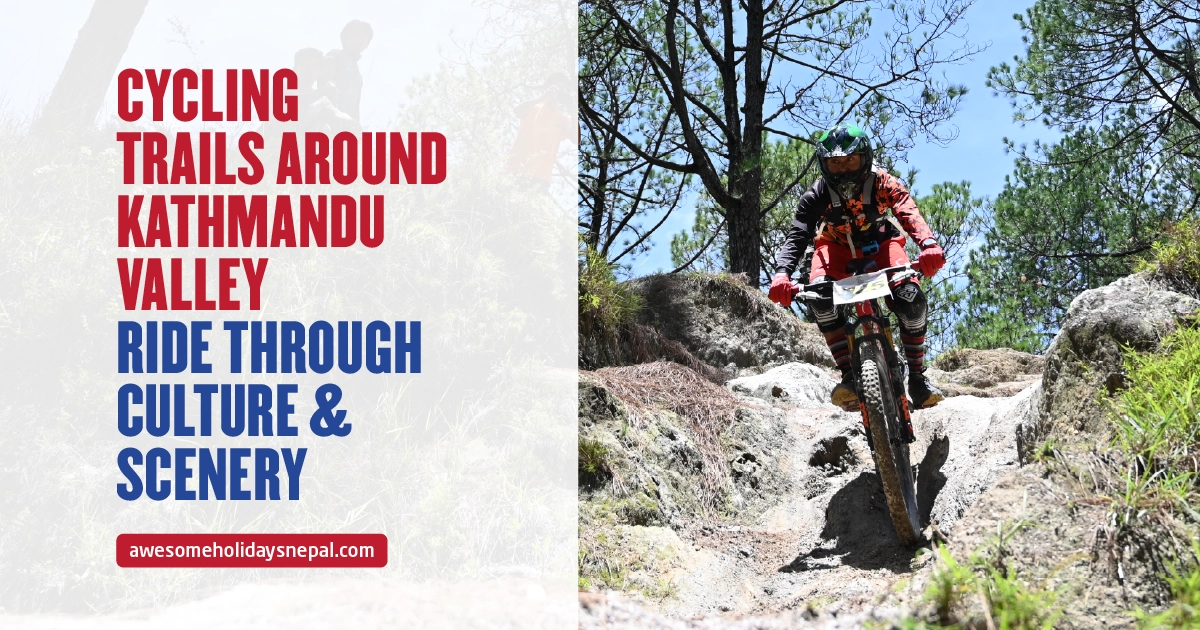Four Seasons of Upper Mustang Trek: When to Visit for the Best Experience
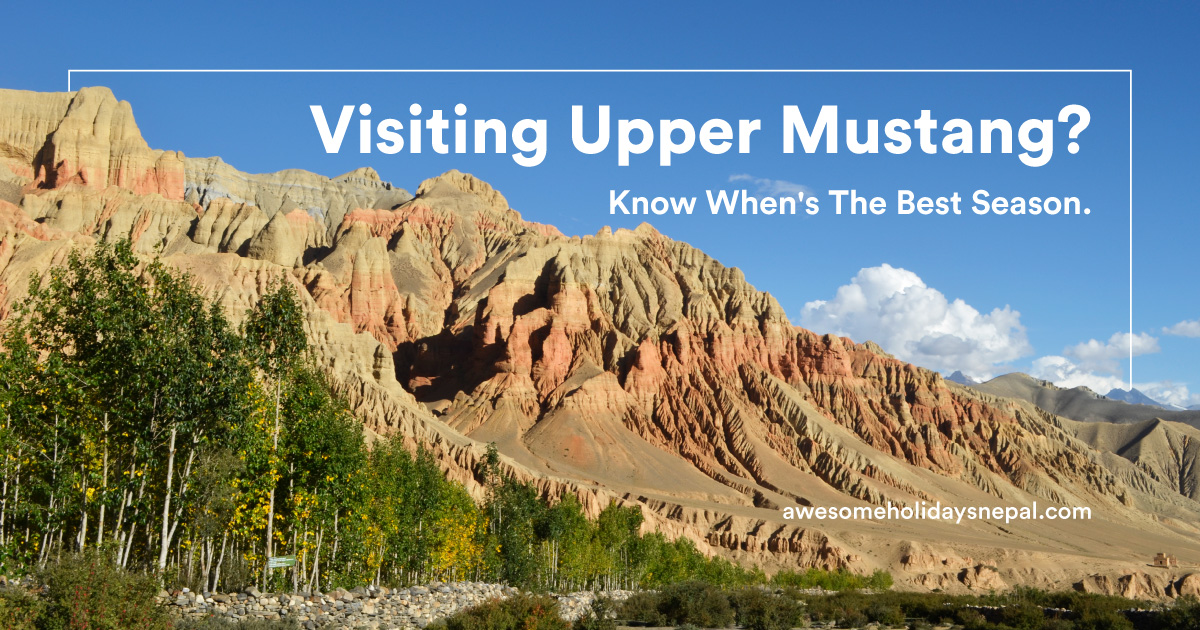
Upper Mustang is one of the most unique and exciting trekking destinations of Nepal. It is often referred to as the “Last Forbidden Kingdom”.
This little gem provides a surreal encounter with its stunning desolate scenery, ancient Tibetan influence, and enigmatic caves. But choosing the season depends on your travel in the Upper Mustang.
Upper Mustang is located in the shadow of the Himalayas, so it is a reachable place even during the monsoon unlike many other trekking areas in Nepal, which encounter significant monsoon rains. Every season presents unique rewards, obstacles, and encounters. Let’s take a thorough look at the four seasons of Upper Mustang trek.
But if you want to know everything about Upper Mustang Trek, read our blog.
Highlights of the Upper Mustang Trek
- Witness breathtaking landscapes
- Get Immersed in Rich Cultural Experience
- Visit the Walled City Lo-Manthang
- Look Wildlife and Flora
- Enjoy and Celebrate Tiji Festival
Seasons of Upper Mustang Trek
Spring Season (March to May) – The Best Time for a Colorful Trek
Among the most popular and satisfying times to visit Upper Mustang is spring. Daytime temperatures are 10°C to 20°C (50°F to 68°F), and the nights are rather cooler. Mostly clear skies allow one to see unimpeded the rugged landscape and snow-capped mountains behind.
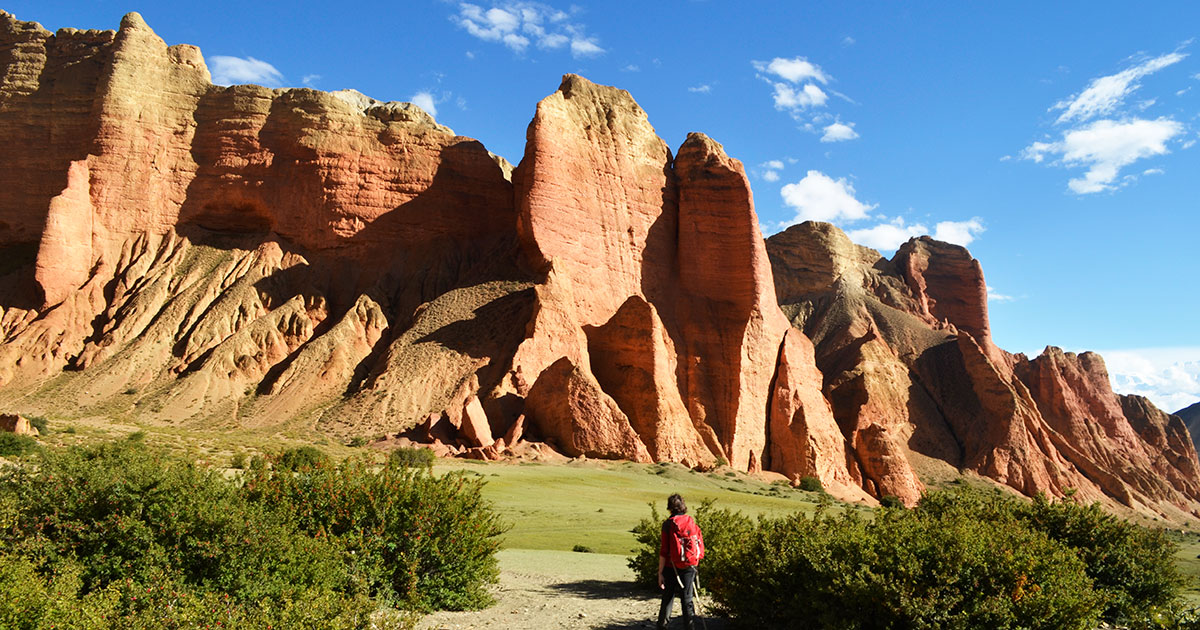
The Tiji Festival, celebrated in May, is among the major attractions of spring mountain climbing. Vivid mask dances, religious ceremonies, and centuries-old customs depicting the triumph of good over evil are all part of this three-day spiritual festival in Lo Manthang. Trekking during this period enables you to experience the vibrant Buddhist culture of the area and observe the magnificent performances of the festival.
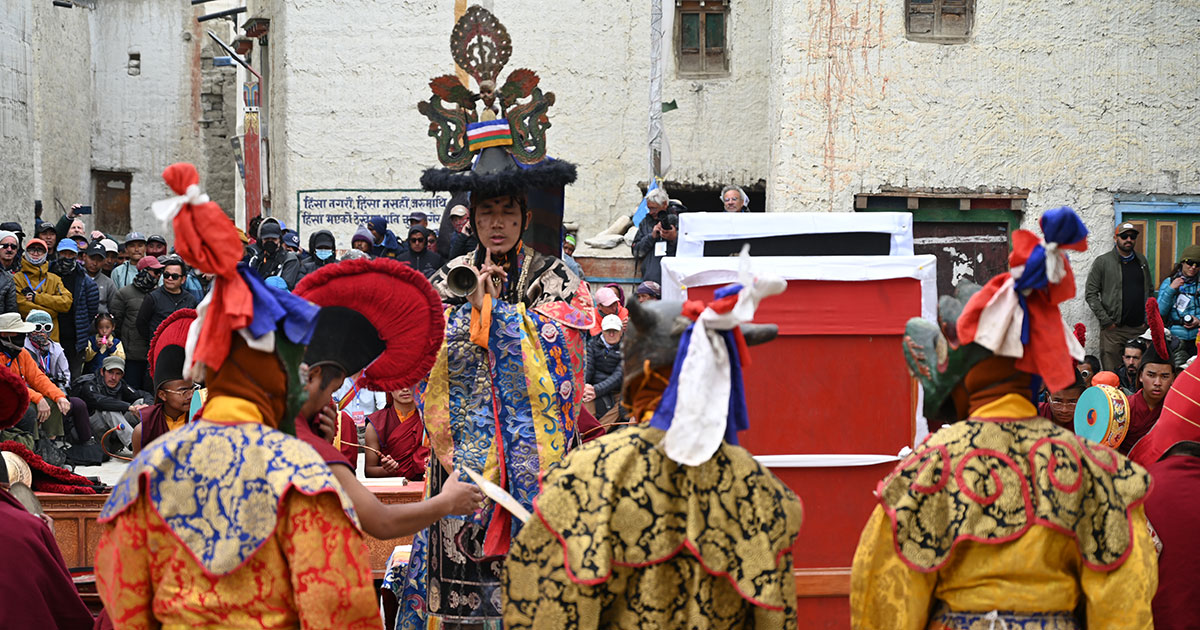
Out of all seasons of upper mustang, spring highlights the beauty of Upper Mustang as the desolate terrain contrasts with blossoming wildflowers and fresh vegetation in the lower Mustang area. For photographers and nature enthusiasts to preserve Mustang’s amazing beauty, this is the ideal moment.
Summer/Monsoon Season (June to August) – A Rain-Free Monsoon Trek
Upper Mustang stays a great trekking possibility during the summer, in contrast with many other trekking destinations in Nepal where the monsoon season presents difficult trail conditions best tackled by experienced hikers. Since it is situated in the rain shadow of the Himalayas, the area gets little rain as contrasted to other parts of the country. Opposed to the usual desiccated ground, this gives summer a somewhat remarkable appeal for trekking since the trails are dry and the scenery assumes an unusual rich look.
Summer temperatures are milder around 5°C to 10°C (41°F to 50°F) while during the day they vary from 15°C to 25°C (59°F to 77°F). With fewer people present, the season offers a calmer trekking experience, perfect for those who seek solitude. Nevertheless, intermittent rain and overcast skies might affect mountain visibility, so hikers would have to be ready for the changing climate.
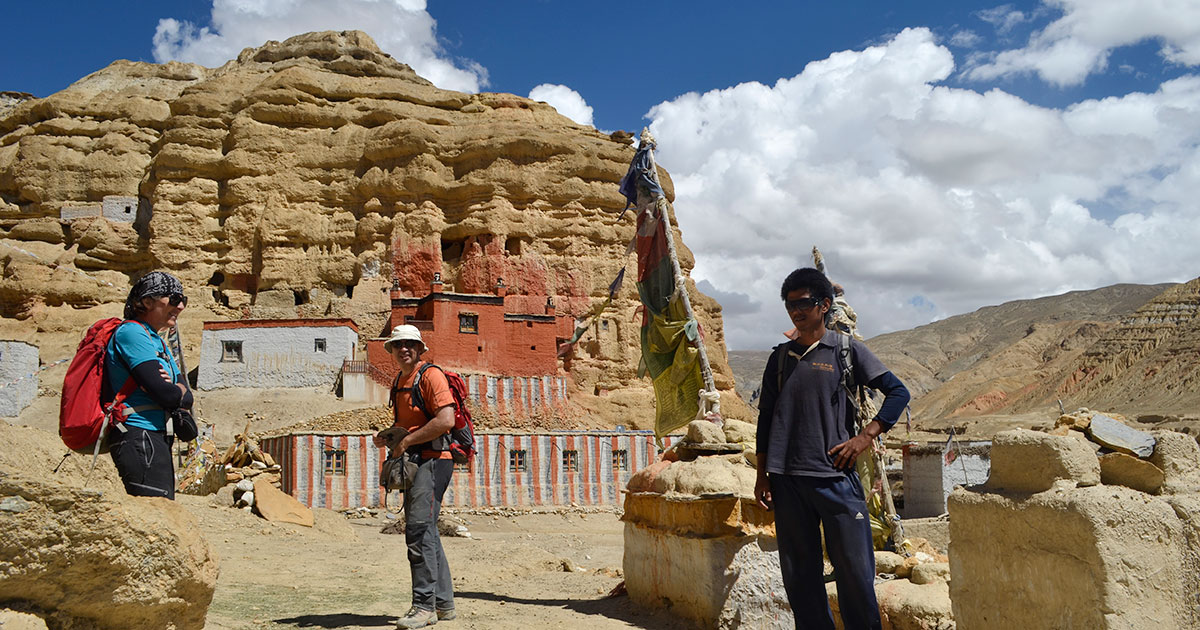
The summer season is a great time to explore the mystical sky caves, ancient monasteries, and the stunning walled city of Lo Manthang without the crowds. The lush greenery in the lower Mustang and the contrast of the red cliffs against the bright blue sky create a surreal trekking experience.
Autumn Season (September to November) – The Peak Trekking Season
Trekking in Upper Mustang is best in autumn since the season has clear skies, strong weather, and pleasant temperatures. With nights ranging from 0°C to 5°C (32°F to 41°F), daytime temperatures range from 10°C to 20°C (50°F to 68°F).
Autumn is perfect for photography and panoramic mountain views since the air is clear and visibility at its peak after the monsoon. With dry and hard trails, the trekking is ideal.
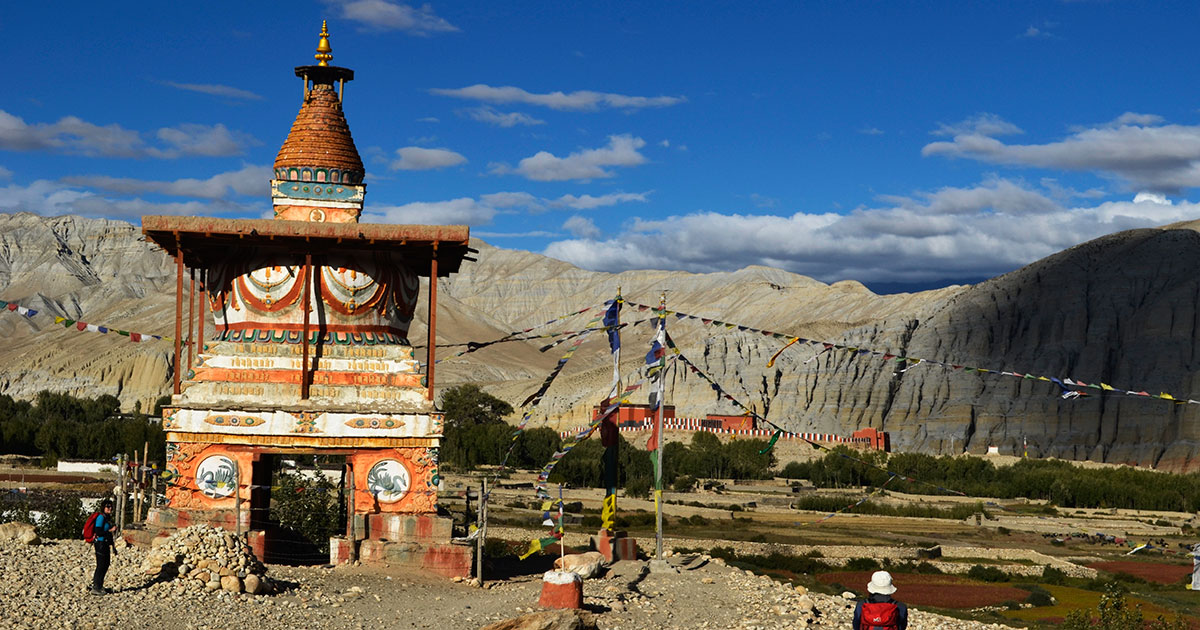
Fall brings local harvest celebrations and traditional rites in the villages to hikers. Most brilliant during this time of year, the cultural wealth of Upper Mustang gives hikers a genuine glimpse of the Himalayan way of life. Even so, one should reserve permits and lodging well ahead of time since fall is a very busy trekking time.
Winter Season (December to February) – A Trek for the Adventurous
Winter turns Upper Mustang into a peaceful, snow-covered scene, therefore providing a very different kind of trek. This is the least liked season, though, since it is very cold. A difficult hike results from night temperatures ranging from -10°C to -20°C (14°F to -4°F) and daytime ones from 5°C to 15°C (41°F to 59°F).
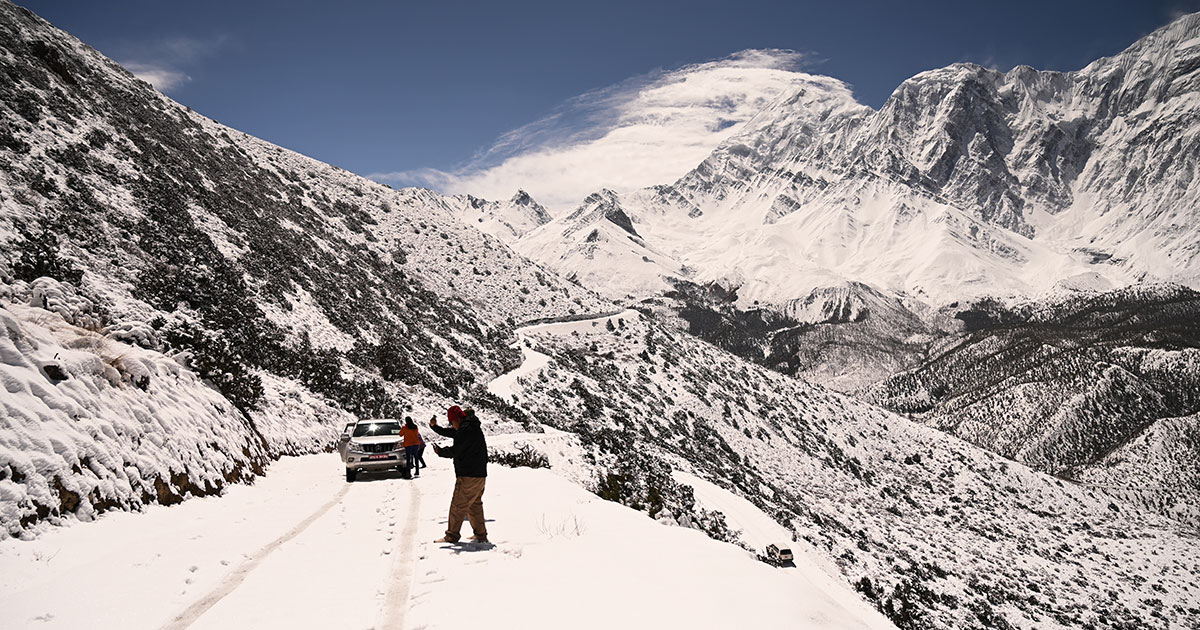
During winter, most Upper Mustang locals move to lower elevations and many tea houses stay shut. Winter trekking calls for great attention to planning since some high passes could be snow-covered and hard to cross. Notwithstanding the difficulties, the seclusion and natural beauty of a snow-covered Mustang draw hikers looking for a tranquil, reflective experience off the beaten path.
Winter travel to Upper Mustang could be fun if you have winter hiking experience and are ready for the cold. The ethereal scene formed by the icy waterfalls, snow-covered peaks, and clear skies provides a new viewpoint of this enigmatic area.
Upper Mustang Trek Itinerary
Here’s what an itinerary for the Upper Mustang Trek looks like:
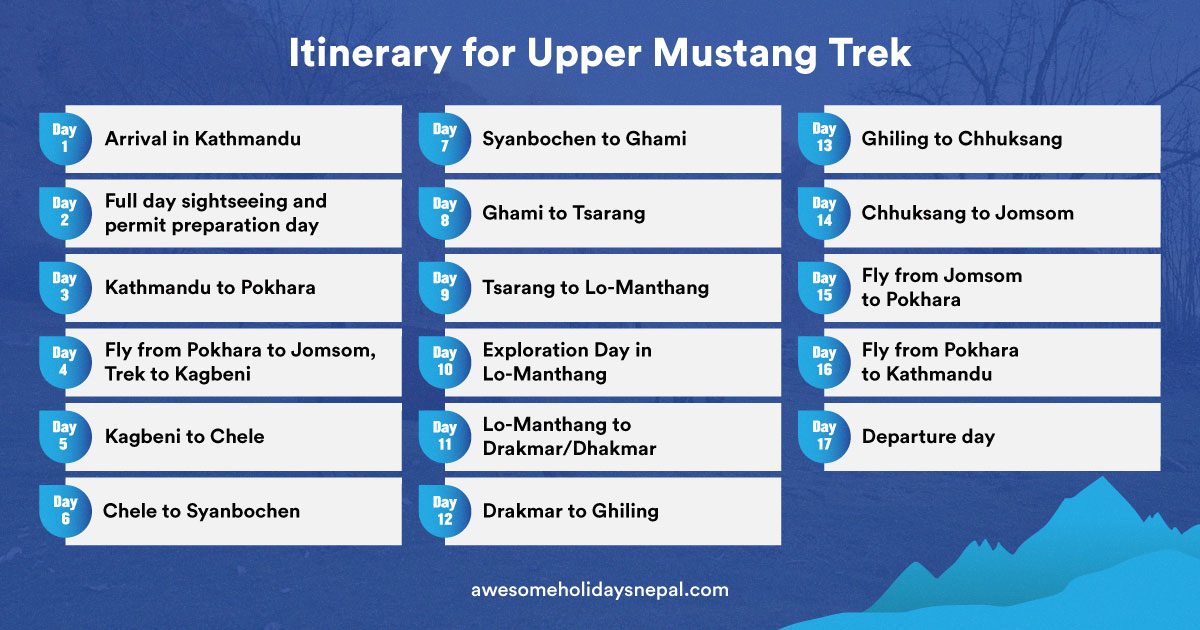
Seasons of Upper Mustang—Which One Calls to You?
Every season presents something different in Upper Mustang village. For the top climate and cultural events, hiking in spring (March–May) and fall (September–November) is strongly recommended. Summer (June-August) offers a great chance for off-season explorers to visit Mustang without concern of rain. For experienced hikers looking for isolation and magnificent winter vistas, winter (December-February) is a possibility.
Proper planning is absolutely necessary for a good journey in Upper Mustang, as seasons are unforgiving. Being in good physical shape, having the required permissions (Annapurna Conservation Area Permit and Restricted Area Permit), and packing the correct equipment will guarantee an amazing experience in Nepal’s Last Forbidden Kingdom. So, wisely plot your trip and welcome the wonder of Upper Mustang through all four seasons!
FAQs
Expand AllWhen is an ideal time to trek to the Upper Mustang Region?
The best time to trek to the Upper Mustang Region is during the Autumn and Spring seasons, as the climate is favorable, and the trekking route is rich in luscious greens. For a safe, memorable, and incredible experience, plan a trek between mid-September and November or March and June.
However, the trek is possible all around the year. As long as you can avoid rainstorms and sustain extreme temperatures, you can ascend during colder months to avoid the crowd.
How long does the Upper Mustang trek take?
The Upper Mustang walking trek usually takes 16 days to complete, but the duration might vary depending on how you customize your trip and the transportation you use.
What permits are required?
To explore the Upper Mustang region, you require three different permits: a special Mustang trek permit, an Annapurna Conservation Area project permit, and a TIMS card (Travelers Information Management System).
What is the weather like on the trek?
The weather can be unpredictable if you are trekking in a mountainous region. Usually, the temperature is lower and can drop to freezing at night.
Besides, the higher elevation areas often have snowstorms, soft rains, and chilled breezes.
What kind of fitness level is required?
To trek to the Upper Mustang region, you will require moderate fitness since you will walk at least 6-7 hours daily. You will also need good cardiovascular endurance and muscular strength to ascend quickly through rough terrain.
If you aren’t somebody who doesn’t perform physical training regularly, it is better to start training at least ¾ months in advance. Ensure you include cardio, flexibility exercises, and strength training in your workout to prepare your body for the trek.
Related blog posts
Discover a choice of tourist destinations loved by most of our visitors. Whether you're on a jungle safari to spot rare animals or walking through a world heritage site, these well-planned itineraries cover the major highlights of Nepal.


